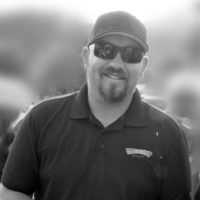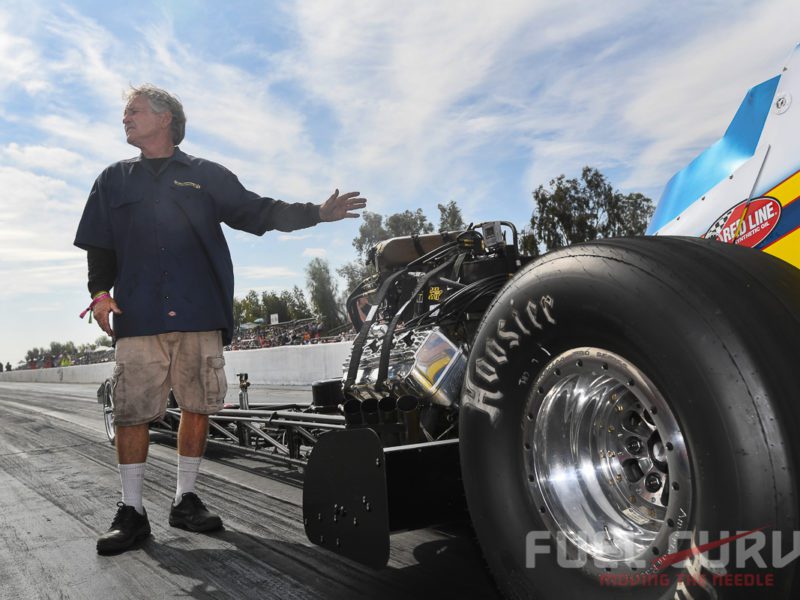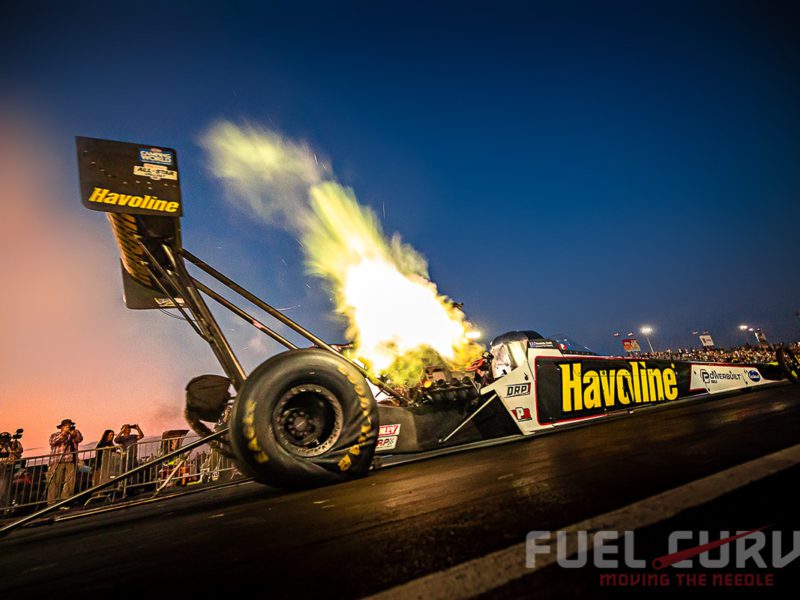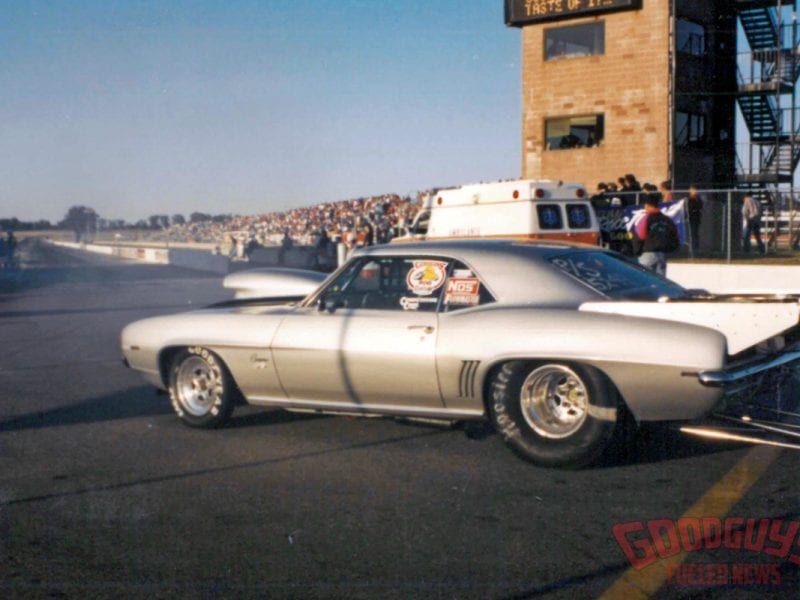Pro Mod Madness! Our Fuel Curve Top 10 List – #10 Danny Rowe
Editor’s Note. This is a ten-part series we will run once per week, introducing the Top 10 Pro Mod race cars in our opinion. Series author Steven Bunker knows a thing or two about drag racing, especially Pro Mods. His grandfather Bob Bunker was one of the premier racers in supercharged, steel-bodied, quarter-mile door cars that were the precursor to the class. Check back each week as Steven counts ‘em down!
We’re in a time now where modifying your daily driver is becoming a routine deal. With so many bolt-on aftermarket parts it’s easy to take your off-the-lot late model muscle car and slap on a supercharger for substantial horsepower gains. That same philosophy is what started the Pro Modified racing craze in the late 1980’s and early 90’s. Racers were starving for lower elapsed times and faster top speeds from their door cars. Most of the early Pro Mod racers were weekend warrior bracket and index class racers. The desire to break free from the chains and let it all hang out drove many east coasters to start this wild new class where the beginning phrase was “run what you brung, and hope you brung enough”.
#10 – Danny Rowe
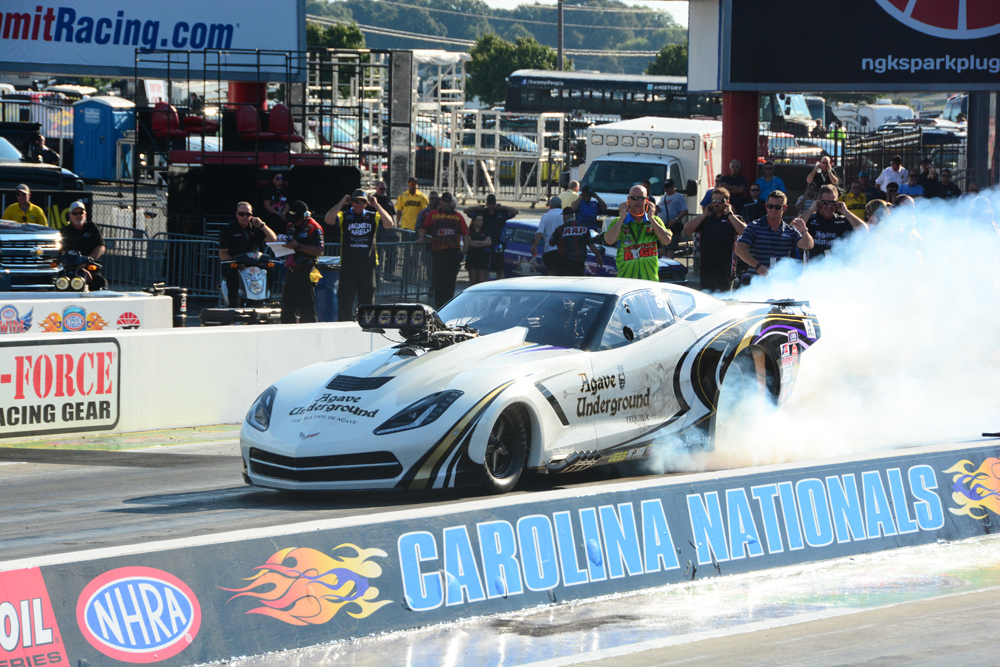
Danny Rowe Racing winning NHRA Carolina Nationals (photo courtesy of Danny Rowe Racing)
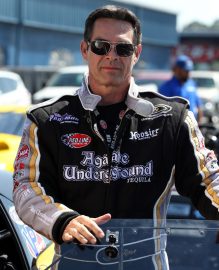 Danny Rowe has been racing Pro Mods for the majority of his adult life. Most of the drivers on our Top 10 are east coast or southern based. Rowe is the only west coaster to move our needle enough for a slot. From dominating local West Coast based events through the 90s and early 2000s, it’s easy to list Rowe as the most successful California Pro Mod driver and he still calls Los Angeles home. He locked up tuner Jimmy Rector who is responsible for turning the screws on the first 5-second Pro Mod car when Mitch Stott broke the 6-second barrier in 2003. Rector still knows his stuff and has given Rowe as well as his teammate Steve Matusek countless round wins as well as NHRA national event wins. Danny Rowe is a huge reason the Pro Mod class thrives within the NHRA. He also is a great ambassador of the RPM: Real Pro Mod group which continues to provide a place to race within the NHRA for Pro Mod teams.
Danny Rowe has been racing Pro Mods for the majority of his adult life. Most of the drivers on our Top 10 are east coast or southern based. Rowe is the only west coaster to move our needle enough for a slot. From dominating local West Coast based events through the 90s and early 2000s, it’s easy to list Rowe as the most successful California Pro Mod driver and he still calls Los Angeles home. He locked up tuner Jimmy Rector who is responsible for turning the screws on the first 5-second Pro Mod car when Mitch Stott broke the 6-second barrier in 2003. Rector still knows his stuff and has given Rowe as well as his teammate Steve Matusek countless round wins as well as NHRA national event wins. Danny Rowe is a huge reason the Pro Mod class thrives within the NHRA. He also is a great ambassador of the RPM: Real Pro Mod group which continues to provide a place to race within the NHRA for Pro Mod teams.
“I love drag racing; I have a tremendous passion for this sport,” Rowe said. “So, I’m dedicated to being the best driver that I can possibly be. To me, that means staying in shape and working on things that I think will make me prepared for what happens inside the car. The hard thing for me is to let things happen. In business, I always want to feel in control. In the race car, you have to learn to react. So, sometimes I’m my own worst enemy. I’m constantly having to remind myself to just enjoy what we are doing and let things happen.”
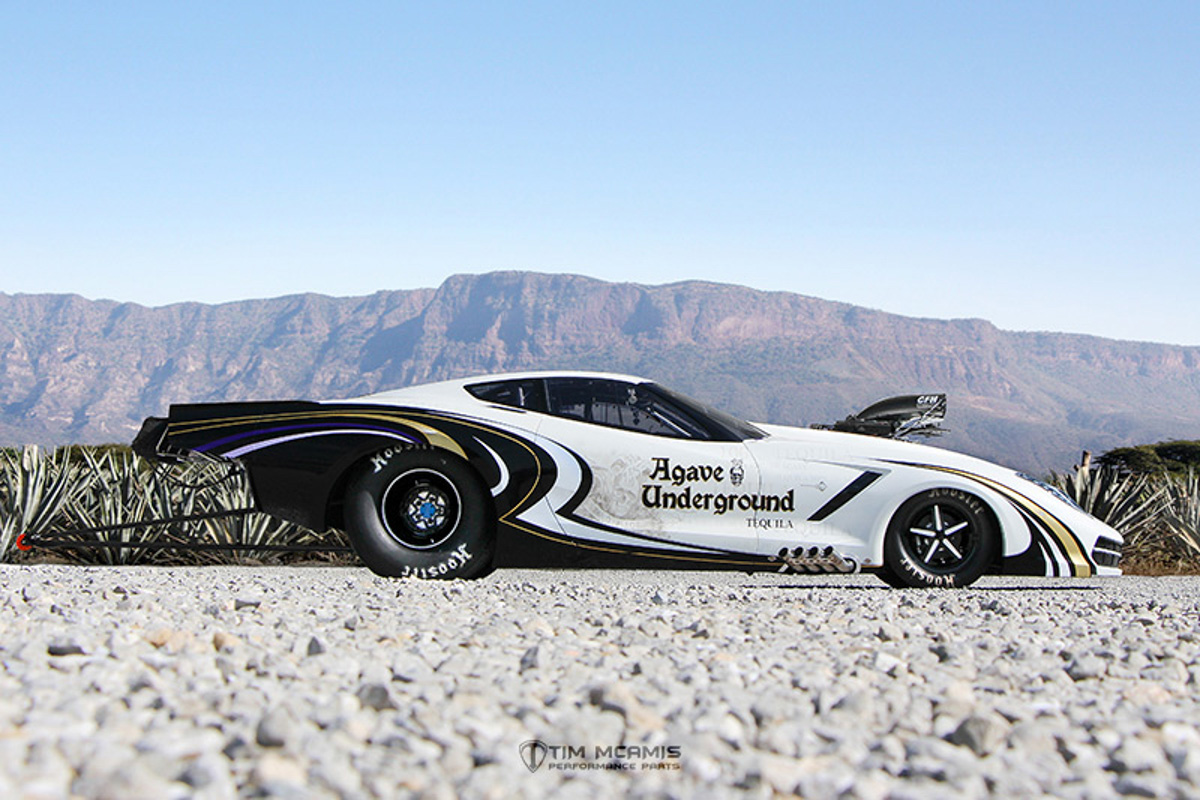
Photo by Tim McAmis Performance Parts
ABOUT PRO MOD RACING
No index, no breakout, no throttle stops. Sizeable horsepower gains were made from adding nitrous oxide kits and roots-style superchargers. The cars had to be door slammers – factory-made vehicles on a suspended chassis, right-hand steer and most importantly, functioning doors.
Back then it was small groups of regionally based racers racing amongst one another to see who had the fastest car at the track on any given weekend. The newly coined wild and crazy Pro Mod class quickly became the modern-day version of fuel altereds with wheel-up launches, long smoky burnouts, wild rides down the track and angry engines waiting to unleash massive power as soon as the ambers dropped.
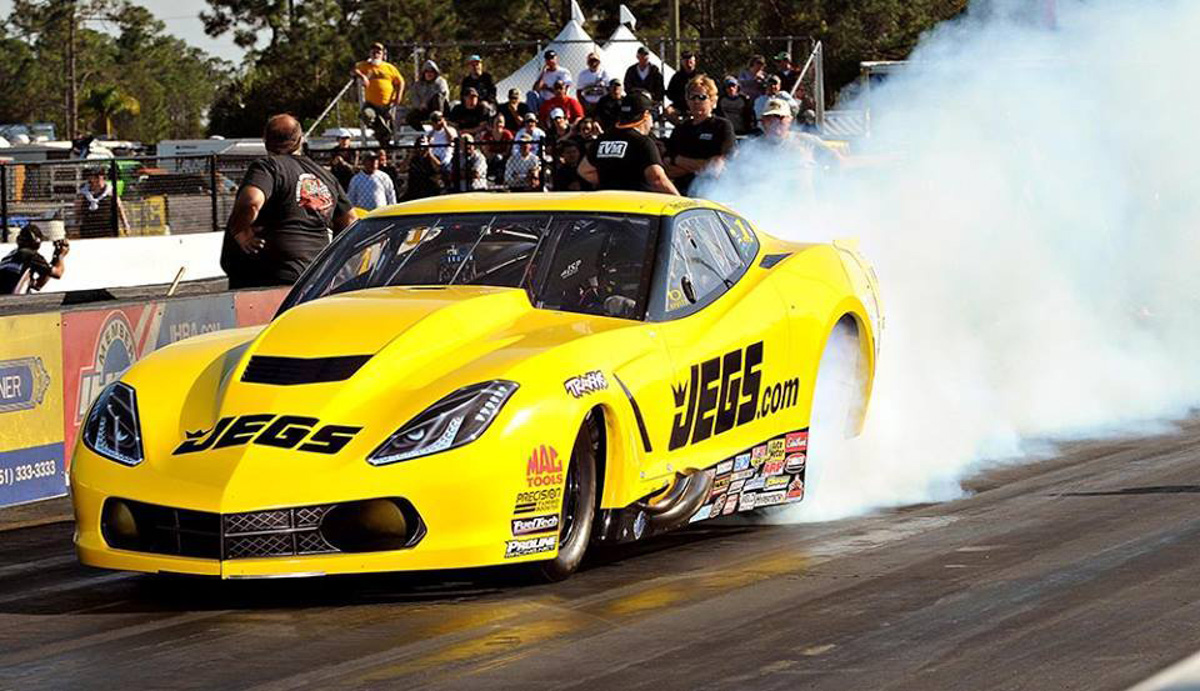
Fast forward a couple decades and Pro Mod as a class is thriving. It’s safe to say that the Pro Mod class today is easily the largest heads-up drag racing class in the world. Weekend warriors are still duking it out regionally for the title of the fastest car at the track on any given weekend while large traveling circuits are in place for those who want to chase points and race for a championship against the best of the best. The continuing progression of parts and pieces are only forwarding the growth of the class which has also spawned many different sub-classes.
The most desirable series for the professional Pro Mod racers is the current J&A Service Pro Mod series. Run at 12 NHRA National events a year ranging from Las Vegas, NV to Charlotte, NC and everywhere in between, the J&A Service series races a full quarter-mile (unlike NHRA’s 1,000 foot limit for nitro cars) under a strict rule book limiting each engine combination individually in the search for parity. Supercharged and nitrous cars are still abundant but in the past 5 years or so turbocharged cars have become a major factor in the Pro Mod world, especially the J&A Service Pro Mod series.
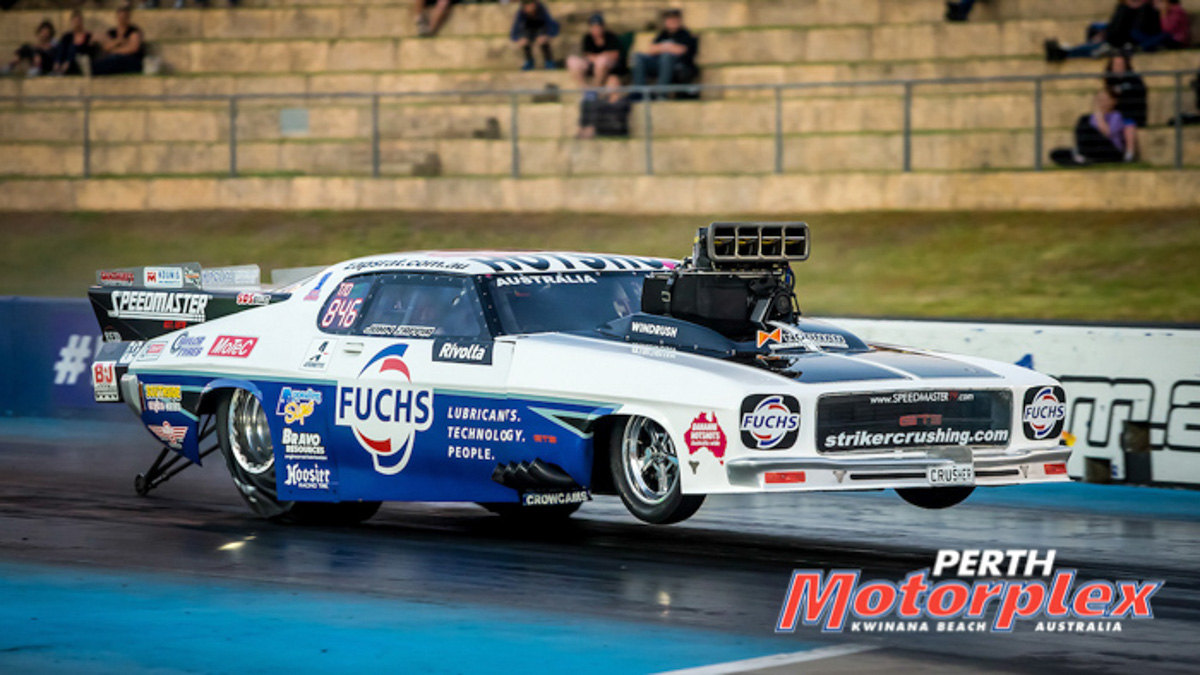
Staying true to how the Pro Mod class started, the Professional Drag Racers Association (PDRA) is, in our opinion, the second largest series which focuses on the old saying “run what you brung and hope you brung enough”. The PDRA split the classes into Pro Extreme for the screw-supercharged and outlaw turbo cars, Pro Nitrous for the outlaw nitrous racers and Pro Boost for the rule-abiding supercharged and turbo cars. All three PDRA classes are contested on the eighth-mile and have strict safety rules in effect when it comes to the engine combinations the rules are slim but some exist.
Aside from the two major options available to race Pro Mod cars, there are countless regional series’ stretched across the US for the weekend warriors. Additionally, many world-wide options exist for Pro Mod racers in countries and continents such as Australia, the Middle East, Puerto Rico, Canada, Europe and many more.
It’s no easy task to narrow down the estimated 700 Pro Mod cars worldwide into a Top 10 but we’ll give it our best tune up.


